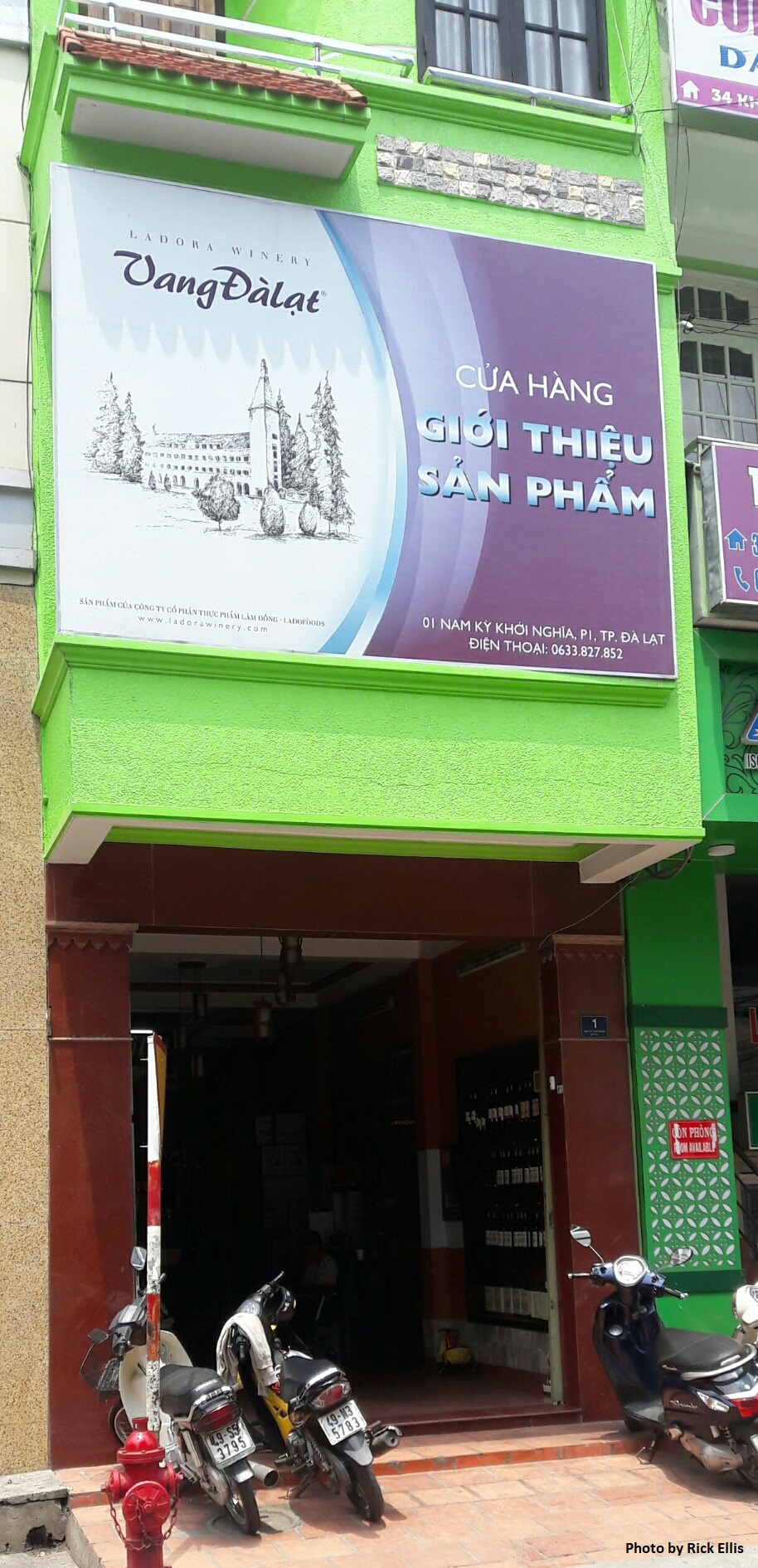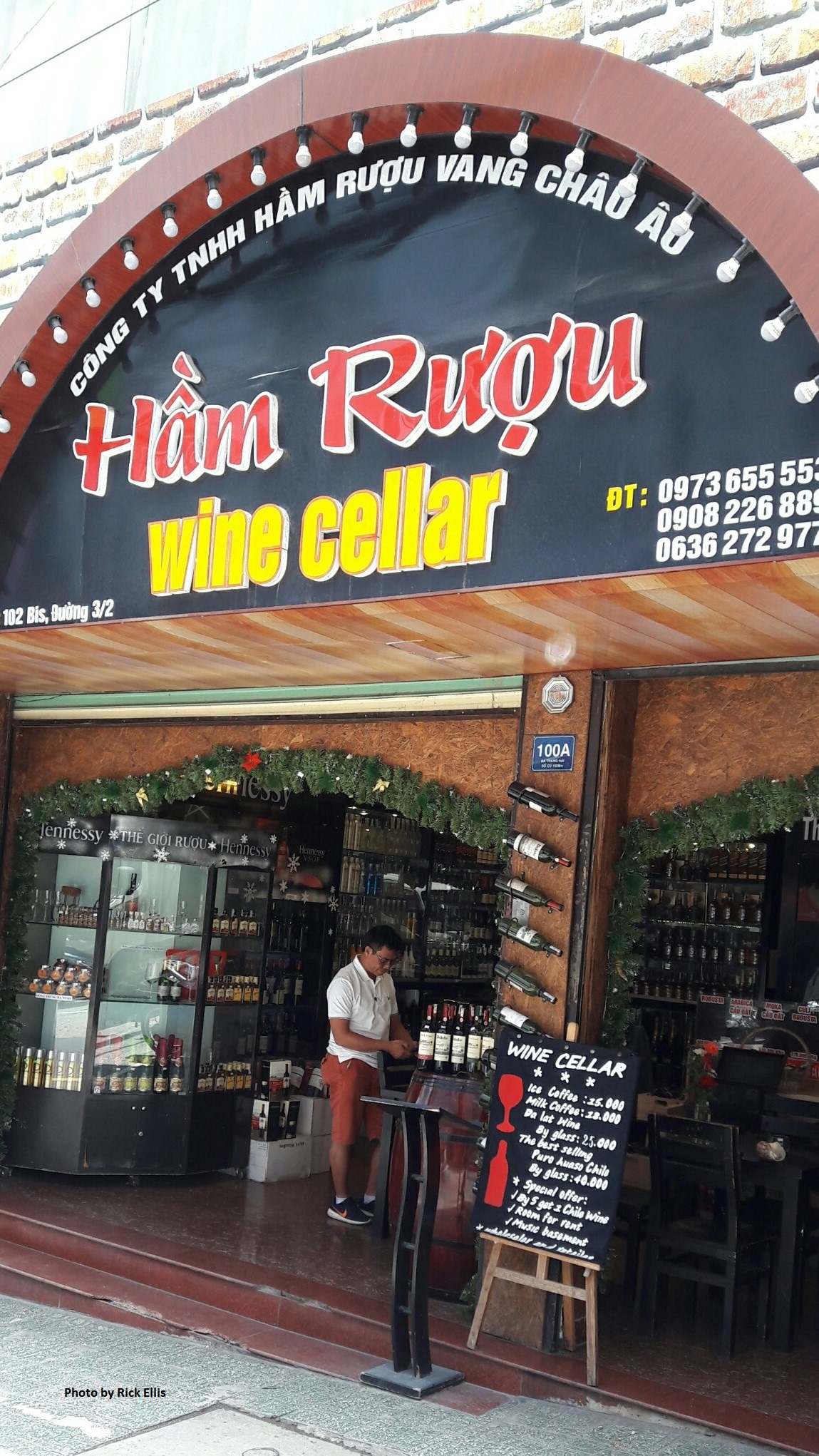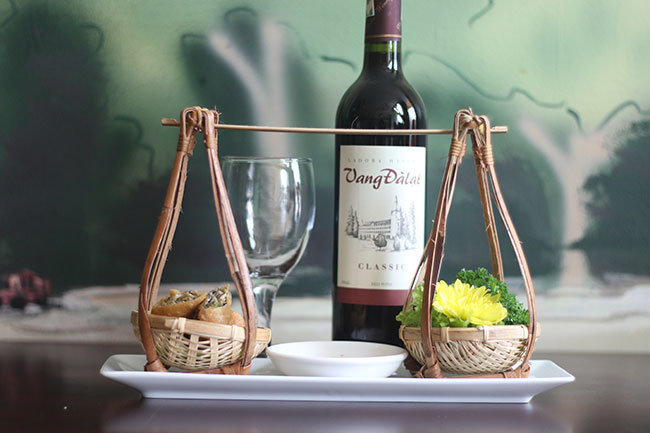Here’s a topic with a future!
WINE!
The Vietnamese have perfected the knack of borrowing from foreign cuisines to create the most interesting fusions of dishes and beverages….
From Korean “kim chi” style fermented cabbage to “pho mai” (from the French word “fromage” meaning cheese), local iced coffee “ca phe da”, and “banh mi” baguettes, there has always been a way to tweak foreign offerings to strike just the right note with the local palate.
After a decades-long struggle the same story has unfolded in Vietnam on “vang,” the Vietnamese translation for grape-based wines that we’re accustomed to drinking in Western countries. “Vang” is derived from the French word “vin,” meaning grape-based wine.
Before we delve any further into this hot topic, I readily confess that I’m an average middle-class wine guzzler, a “half liter of house wine” kind of guy. Any worthy wine expert could blow me away with statistics on “pH” measurements of acidity, opinions on how well a wine can be paired with various foods, and of course with glass sniffing and wine-swishing-around-the-mouth techniques.
That said, I lived in Europe for 13 years literally surrounded by vineyards, so I sure know a good wine from a bad one or if I don’t, I can fake it very well.
Producing quality foreign-style grape wines requires a lot of patience because it’s a trial and error process to match the right type of grapevine with soil, temperature, humidity, and growing techniques to get just the right grape. Grapes are harvested twice per year, so it takes many cycles until there is demonstrable progress.
That’s how the quality and consistency of wine evolved in Western and Eastern Europe, the Americas, Australia, New Zealand, and South Africa, and that’s how the story is unfolding here in Vietnam.
French colonialists started planting grapevines as far back as the 19th century in the Ba Vi Mountains near Hanoi in the northern part of Vietnam but were not successful in producing tasty wines due to the cool, humid climate.
The same situation occurred in the 1950s and again early in this new millennium in Da Lat, which was also thought to be the right location for growing grapes but neither the crisp temperatures nor the high level of humidity in the area was ideal.
During the second half of the last century vineyards were started on the coastal plain of Ninh Thuan Province and today several wineries operate in the area.
Phan Rang is the focal point for growing grapes in Ninh Thuan, situated about 100 kilometers east of Da Lat. Phan Rang is one of the least rainy areas of Vietnam – another advantage when trying to grow grapes for wine.
When the grapes are harvested the wine itself can be produced anywhere provided transportation and storage are not prohibitively expensive. Some wineries are located in and around Phan Rang and others in Da Lat to which the harvested grapes are shipped.
There are other facilities in different regions of Vietnam where wines are fermented, aged, bottled, stored, and shipped to distribution points all over the country.
I’d heard about wines from the Da Lat area for many years (mostly via poor or at best average reviews from foreign wine critics) and finally found it on my first trip to the town just over a year ago. I saw a few shops selling local wines, investigated and learned there are several wine companies located in this area.
 |
| A domestic wine store in Da Lat |
Bottle by bottle, I painstakingly (it’s a tough job but somebody has to do it) made my way through most of the locally produced wines for sale. The low-end wines are drinkable for the most part, so, after a few tests you can probably find a red or white that suits you in the US$4 or $5 per bottle range.
Some of the low-end domestic wines are mixed with fermented mulberry juice resulting in a sharp, acidic bouquet which I find delightful but you may not. Those low-end wines don’t pair well with food but on their own they’re pleasant for tippling as well as being very affordable.
You can enjoy room temperature or chilled, and some drinkers have been known to pop in a bit of ice to take the edge off when needed.
There are also domestic blends of white wine on the market using Cabernet Sauvignon grapes grown in the same vineyards in the Phan Rang area. The white wines still lag behind the reds in quality, but the gap is narrowing quickly.
High-quality domestic red wine starts at about $10 per bottle with the top of the line wines going for as much as $30 per bottle, so the best Vietnamese wine is priced to compete head to head against European, Australian, South African, and South and North American wines.
The top-quality wine has already snagged awards at both Asia-Pacific, European, and American International wine contests in the last couple of years. One brand was also selected as the official wine of the APEC Summit 2017 held in Da Nang last November, which helps put Vietnam on the international wine map.
Some Europeans still claim that local Vietnamese wine is too acidic to be paired with food, so it should be relegated to pre-dining aperitif or dessert/after meal status only, while the high-priced imported wines are enjoyed with meals.
The list of awards above would indicate the argument about acidity is becoming dated as Vietnamese wines are more popular domestically and internationally, enjoying double-digit annual percentage increases in domestic consumption plus healthy exports to Thailand, Laos, Japan, South Korea, Malaysia, and Switzerland.
Many wine shops have opened in Vietnam in recent years which sell domestic and imported wines by the glass or bottle, so the “wine cellar” for tasting concept is developing. Wine tours are advertised but are just beginning to gain momentum.
 |
Marketing of domestic grape-based wine in Vietnam is a challenge because of the consumer mindset that values imported products over local goods. It doesn’t matter what it is – meat products, cheese, beer, coffee, milk, you name it – the common thinking is local products just don’t measure up.Ten years ago French wine accounted for almost half the market in Vietnam – today it’s down to 15%. Thanks to the 2014 Free Trade Agreement with Chile, import duties on Chilean wine are one-third of what they were before, making Chilean wine very competitive with local products.
I see this issue often with beer, where inferior imported beers are more popular than high-quality local brews, even when the local beers are much cheaper. I won’t mention any names, but there is one imported beer that calls itself the king, yet has a reputation for being a low-quality, watery beer to be avoided in its home country.
Same goes for coffee, and Vietnam is the second largest coffee producer in the world!
What more could we possibly want?
Still, many consumers prefer to try other coffees that are much pricier yet without superior flavour.
There are several ways this could evolve going forward: Vietnamese wine companies could employ various marketing initiatives to get locals to try domestic wines and slowly seize a larger market share. Events such as tastings, tours, contests, exhibitions with tastings, and sponsored food fairs can all contribute to informing consumers of the quality of local wine.
Perhaps some of the fascination with foreign wines is just a passing fad, and consumer thinking will mature and compare more with domestic wines in the future.
Whichever way the wine scene in Vietnam evolves, one thing is certain: Vietnamese wine is good and it’s only going to get better with time.



















































